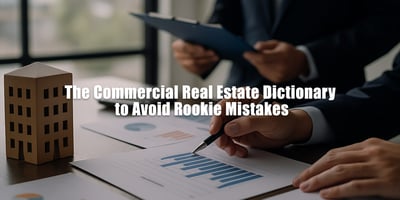Here's what's about to happen to real estate, and if you're not paying attention, you're going to...
When Will Commercial Real Estate Crash? Market Risks & Recovery

The commercial real estate (CRE) market has been under intense scrutiny as investors, analysts, and industry professionals grapple with a critical question: when will the long-anticipated commercial real estate crash occur? With mounting pressures from high interest rates, evolving work patterns, and a looming "maturity wall" of debt obligations, the answer is more complex than many expect.
The Current State of Commercial Real Estate
The commercial real estate sector finds itself at a crossroads in 2025. While predictions of an imminent crash have persisted since 2023, the reality has proven more nuanced. According to a survey by Deloitte, among 880 global CRE executives, 88% expect revenue growth in the coming year, with 68% anticipating better market conditions overall. This optimism contrasts sharply with earlier dire predictions.
However, beneath this cautious optimism lies significant structural challenges that continue to pressure the market. The sector faces what experts call a "perfect storm" of factors that could trigger significant disruption.
The Maturity Wall: A $1.5 Trillion Challenge
Perhaps the most pressing threat to commercial real estate stability is the so-called "maturity wall" – a massive wave of loan maturities coming due over the next few years. Landlords for offices, apartment complexes and other commercial real estate have $1.5 trillion of debt due by the end of next year, according to Jones Lang LaSalle Inc. That leaves a gap of as much as $400 billion between the amount owed and the capital available for refinancing.
The scope of this challenge is staggering. 20% of $4.8 trillion of outstanding commercial mortgages held by lenders and investors will mature in 2025, a 3% increase from the $929 billion that matured in 2024. This represents an unprecedented refinancing challenge, particularly given the current high-interest-rate environment.
The timeline for these maturities creates additional pressure points. Commercial real estate loans totaling almost $1.8 trillion are set to mature before the end of 2026, according to Trepp, with the peak occurring in 2027 according to S&P Global analysis.
Market Conditions and Interest Rate Impact
The Federal Reserve's aggressive interest rate hikes have fundamentally altered the commercial real estate landscape. Properties purchased or refinanced during the era of ultra-low interest rates now face refinancing at significantly higher rates, creating a substantial gap between current debt service obligations and what borrowers can afford.
This interest rate environment has created a repricing scenario where property values have declined while debt service costs have increased. As investors account for greater risk from situations like global instability and supply chain disruptions, the Counselors of Real Estate expects cap rates to climb in 2025.
Sector-Specific Challenges
Different commercial real estate sectors face unique pressures:
Office Properties: The shift to remote and hybrid work models has fundamentally altered office space demand. At the beginning of 2025, office demand showed signs of recovery but wasn't strong enough to push net absorption into positive territory, leaving vacancy rates near record highs.
Industrial Real Estate: While previously robust, industrial properties are showing signs of weakness. Industrial vacancies continued to climb, contributing to a deceleration in what was once the strongest performing sector.
Retail Properties: The retail sector has shown more resilience, with the retail market stayed tight, constrained by a lack of new supply.
Why the "Crash" May Not Materialize as Expected
Despite these significant challenges, several factors suggest that rather than a sudden crash, the commercial real estate market may experience a more gradual adjustment:
Extended Loan Terms: We expect that a significant amount of commercial real estate loan maturities this year will be pushed to 2025 and beyond, according to CBRE. This "extend and pretend" approach by lenders helps avoid immediate distress but potentially delays the reckoning.
Selective Recovery: A report from CBRE predicts a 10% increase in investment activity as the market begins to stabilize, suggesting that certain segments may find their footing more quickly than others.
Banking System Stability: Unlike previous real estate crises, the current situation hasn't triggered widespread banking failures, though more than $1 trillion in CRE loans will come due, and an increasing number of banks, mostly regional and community banks, risk having insufficient capital cushions.
Timeline and Market Outlook
Rather than asking "when" commercial real estate will crash, industry experts suggest focusing on "how" the market will adjust. The consensus points to a prolonged period of adjustment rather than a sudden collapse:
2025: The current year is viewed as transitional, with the anticipated recovery is expected to be gradual. Many properties will face refinancing challenges, but extend-and-pretend strategies may delay widespread distress.
2026-2027: These years represent the peak of the maturity wall, when the most significant refinancing challenges will occur. This period is most likely to see increased distressed sales and property value adjustments.
Post-2027: Market observers expect more normalized conditions to return as the bulk of problematic loans work through the system.
Investment and Risk Management Considerations

For investors and property owners navigating this uncertain environment, several strategies emerge:
Early Action: Properties with near-term maturities should begin refinancing conversations well in advance, as lenders are increasingly selective and the process takes longer.
Capital Reserves: Maintaining adequate capital reserves for potential cash calls or debt service coverage shortfalls has become essential.
Asset Quality Focus: High-quality properties in prime locations with strong tenant profiles are most likely to weather the current storm and secure refinancing.
Sector Diversification: Given the varying performance across property types, diversification becomes particularly important.
Conclusion
The question of when commercial real estate will crash may be based on a flawed premise. Rather than a sudden collapse, the market appears to be undergoing a prolonged adjustment period characterized by repricing, refinancing challenges, and selective distress. The massive maturity wall represents the most significant near-term risk, but the timeline extends over several years, allowing for gradual adjustments rather than catastrophic failure.
Executives should take steps now, including examining banking relationships, extending debt maturities, and securing adequate capital to navigate the challenging period ahead. While certain properties and owners will undoubtedly face distress, the broader market appears positioned for adjustment rather than collapse.
The commercial real estate market of 2025 and beyond will likely look different from the pre-pandemic era, with new valuations, different tenant preferences, and evolved financing structures. Success in this environment will require adaptability, adequate capitalization, and realistic expectations about the pace of recovery.
For those seeking to understand these market dynamics in greater detail, resources like industry analysis platforms and real estate investment sites provide ongoing coverage of market trends and investment opportunities as the situation continues to evolve.
This article provides general market analysis and should not be considered investment advice. Market conditions can change rapidly, and individuals should consult with qualified professionals before making investment decisions.




